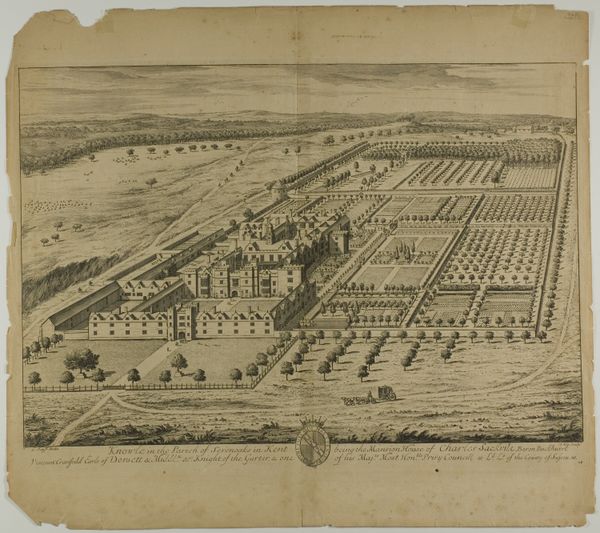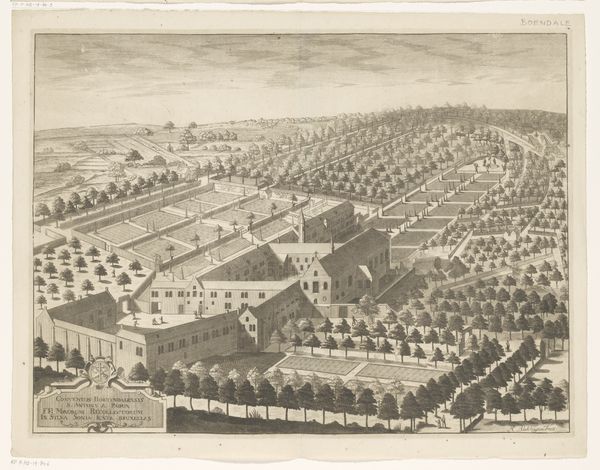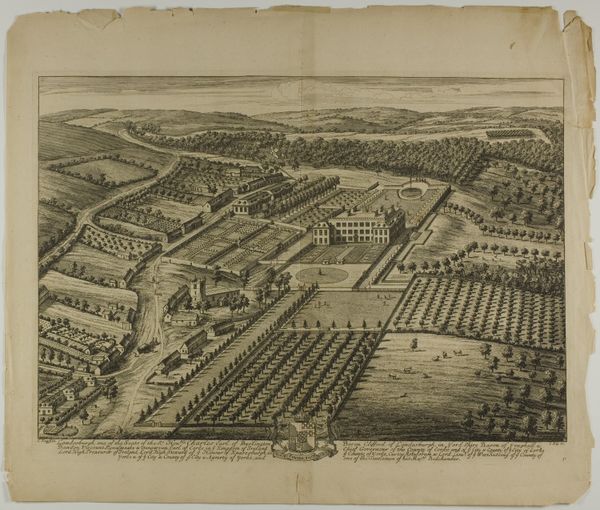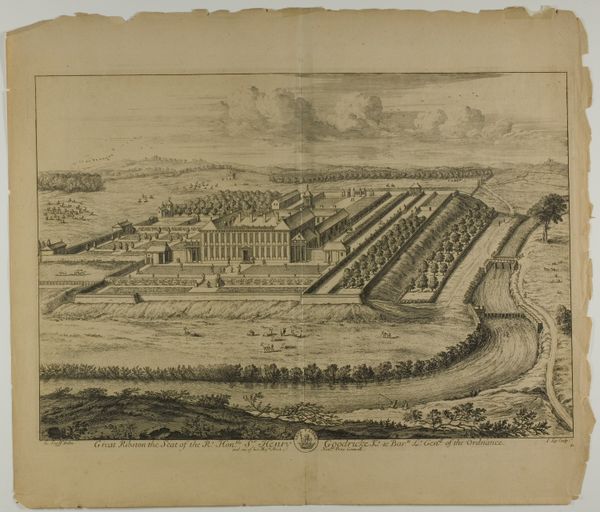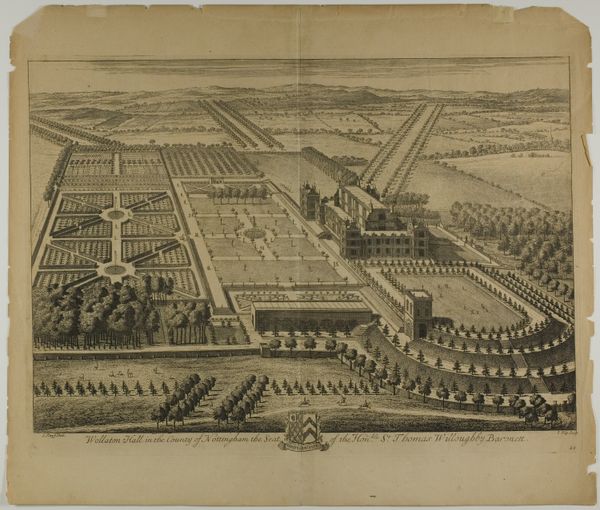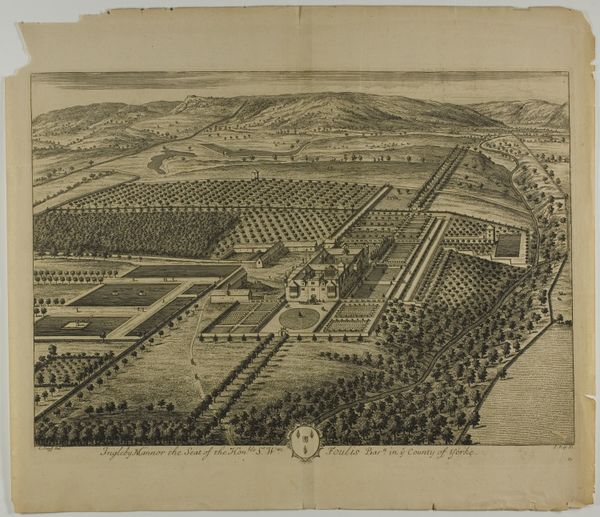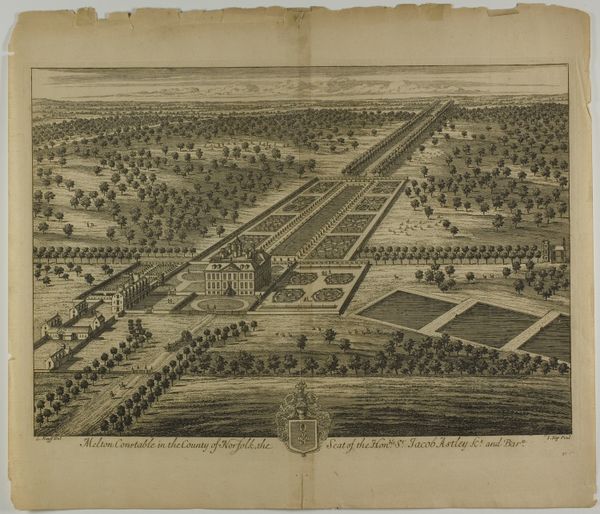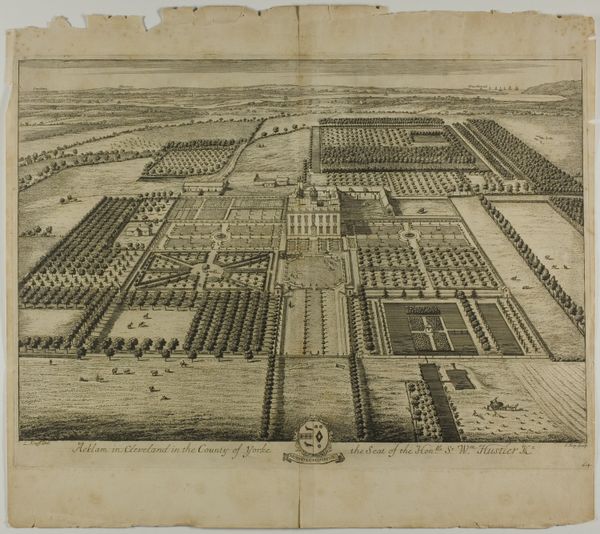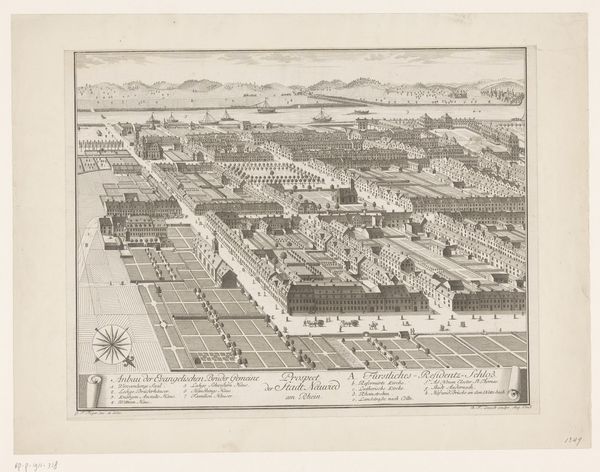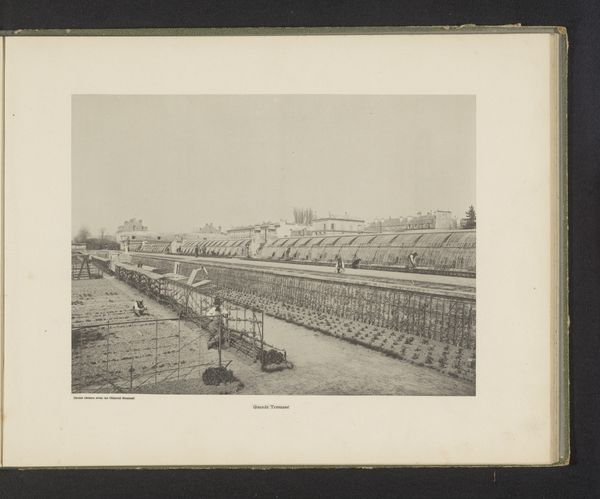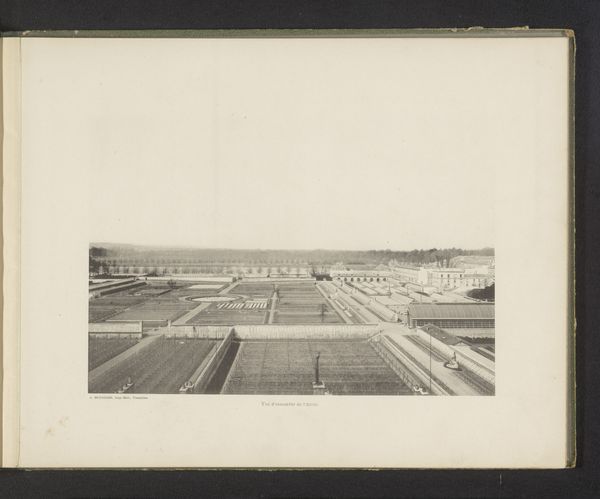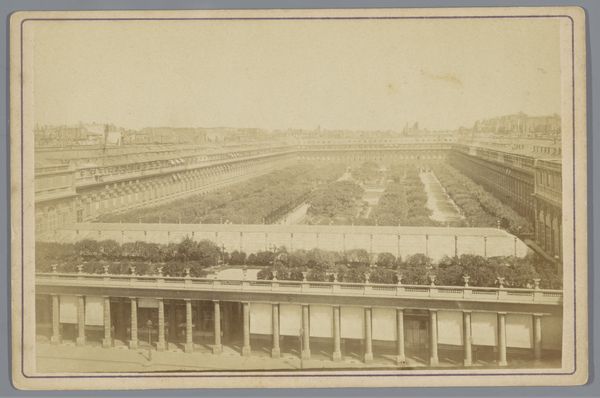
Fair Lawn in the County of Kent, plate 49 from Britannia Illustrata Possibly 1707
0:00
0:00
drawing, print, etching, paper, engraving
#
drawing
#
baroque
# print
#
etching
#
landscape
#
paper
#
geometric
#
cityscape
#
engraving
Dimensions: 344 × 470 mm (image); 351 × 479 mm (plate); 444 × 501 mm (sheet)
Copyright: Public Domain
Curator: Oh, the formality! Look at that precise layout. Everything is so measured. Editor: Indeed. What we’re looking at is "Fair Lawn in the County of Kent, plate 49 from Britannia Illustrata," possibly from 1707, by Johannes Kip. It's an etching and engraving on paper. What strikes you first? Curator: It feels like a declaration of power. This landscape is absolutely regimented into submission. All these geometric shapes—nature is forced to obey a higher authority, an idea that really took hold during the Baroque period. What about you? Editor: I am thinking about the cost. Who paid for this, and at whose expense was it built? Fair Lawn belonged to the Lord Barnards apparently. The estate itself almost disappears, subsumed within these grand designs. Look how they’ve weaponized the land. Curator: A fascinating point. Consider the symbolism of a walled garden, representing not just earthly delights but also paradise itself—a space protected, controlled, perfected. The symmetry evokes order. Editor: But this enforced symmetry also implies a kind of social order. You can see clearly delineated boundaries; who is allowed in this Eden and who remains outside? Land, after all, is rarely just land. It’s power, resources, and a very potent symbol of dominance. Curator: Well, but there is something so attractive in its ambition, the almost hubristic vision of humankind. Do you sense how it plays to our own desire to control our environment? Editor: Sure, it offers a view, but this isn’t an innocent image. These birds-eye views offer the Lord and his family an idea of control over an expansive world. It invites us into an impossible fantasy. Curator: Even still, it makes me think of similar themes across diverse eras and places. The geometric order that speaks to our deep human search for underlying structures that unite things. Editor: Right, maybe it’s helpful to remember the conditions that make “Fair Lawn” a success are founded on inequity, and what this illustrates can only be realized with tremendous cost and often suffering. Curator: The longer we look, the more questions arise. I’ll definitely carry this image in my mind and research the fascinating contradictions we’ve started to unpack. Editor: Agreed. Let’s leave it there for now. The image offers many layers to unpack, hopefully provoking a deeper reflection.
Comments
No comments
Be the first to comment and join the conversation on the ultimate creative platform.
